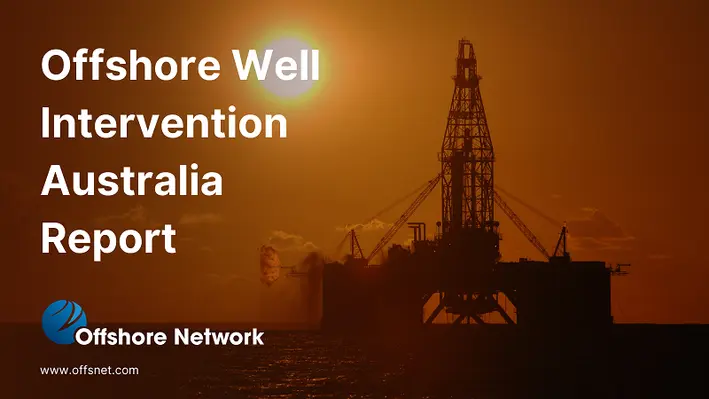

Relatively stable oil prices and a growing global oil demand is creating favourable dynamics for the oil and gas community in the near-future, however uncertainty is rife over how long this will last as the race to meet the Paris Agreement 2050 target intensifies.
While this is raising questions over further drilling activity offshore Australia, it is suggesting a promising future for the country’s well intervention market as operators seek to squeeze the last drops of oil out of existing assets and perform end-of-life work in preparation for the substantial decommissioning task ahead. At the same time, the offshore carbon capture and storage space is garnering significant interest and marks another tantalising frontier that is receiving Government backing.
Read Offshore Network’s full report to understand the background and nuances of Australia’s offshore well intervention market as well as the potential challenges (such as labour shortages and vessel availability) which threatens to stifle it.
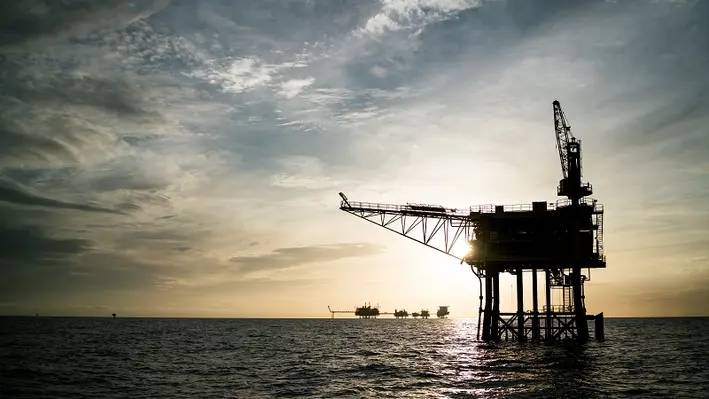
 McDermott has been awarded an engineering, procurement and removal contract for offshore decommissioning work by Woodside Energy.
McDermott has been awarded an engineering, procurement and removal contract for offshore decommissioning work by Woodside Energy.
The award is for the full removal of the Stybarrow disconnectable turret mooring (DTM) buoy, as part of the decommissioning of the Stybarrow field located in the north-western Cape of Western Australia.
Under the contract scope, McDermott will provide project management and engineering services for the recovery, transportation and offloading of the DTM buoy to an onshore yard for dismantling and disposal.
Mahesh Swaminathan, Senior Vice President, Subsea and Floating Facilities, McDermott, said, “This award not only demonstrates McDermott’s proven track record in undertaking deepwater projects of diverse scopes, but it also highlights the critical importance of decommissioning in the offshore industry.
“With our seamless integration of engineering, fabrication, and offshore mobilisation expertise, we believe we are well-equipped to execute this project efficiently and responsibly, ensuring the safe recovery and removal of the Stybarrow DTM buoy.”
The DTM buoy will be removed utilising McDermott’s DLV2000 vessel, with the Perth-based team overseeing project management while engineering and fabrication support will be provided by the team in Kuala Lumpur, Malaysia, and Batam, Indonesia.

 Global energy consultancy Xodus has been awarded a contract to provide technical and project support services for Phase One of the decommissioning of the Northern Endeavour FPSO.
Global energy consultancy Xodus has been awarded a contract to provide technical and project support services for Phase One of the decommissioning of the Northern Endeavour FPSO.
Phase One covers activities to facilitate the disconnection and removal of the FPSO including topsides and subsea flushing and well suspension.
Xodus will be working on behalf of the Australian Government, providing advice and project coordination, regulatory and environment, health and safety, technical, quality assurance, and contract management as part of the agreement.
Alasdair Gray, Late Life and Decommissioning Lead at Xodus, said, “We have a highly experienced local team with several of our colleagues having extensive experience of the Northern Endeavour either from the early design and installation phase of the project or during production operations. This means that whilst being able to bring a fresh approach, the facility is already familiar to much of the team.
“We understand environmental sensitivities and the impact these can have on any proposed activity or execution plan. Expert technical advice and careful planning will be critical to the successful decommissioning of the offshore field in a safe and responsible manner. We are pleased to provide the necessary support to ensure that the decommissioning strategy is robust and ultimately compliant with regulatory expectations.”
The Northern Endeavour is a 274 m long FPOS which is permanently moored between the Laminaria and Corallina oil fields in the Timor Sea. The now redundant production system comprises a network of subsea wells tied back to the permanently moored vessel unit through a system of subsea manifolds, flowlines, umbilicals, and dynamic risers.
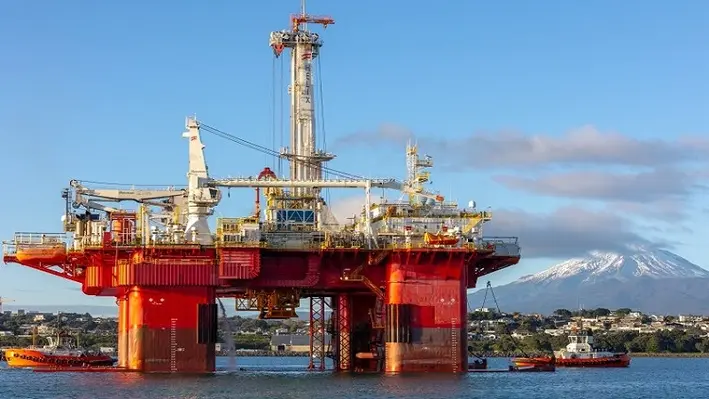
 Helix Energy Solutions’ Q7000 vessel has berthed in Port Taranaki to carry out a crew exchange and load up on supplies before heading to complete the third stage of the Tui oil field decommissioning campaign, which is set to take approximately three months to complete.
Helix Energy Solutions’ Q7000 vessel has berthed in Port Taranaki to carry out a crew exchange and load up on supplies before heading to complete the third stage of the Tui oil field decommissioning campaign, which is set to take approximately three months to complete.
Port Taranaki’s head of commercial, Ross Dingle, said the port was pleased to support the project, having also provided berthing services and laydown facilities for the first two stages.
Port Taranaki is working with New Plymouth-headquartered energy consultancy, Elemental Group, which is providing project management assistance of New Zealand operations for Helix Energy Solutions.
Nick Jackson, Elemental Group Director, said, “All up, there will be a team of more than 100 on the Q7000, over half being Kiwis and Aussies in operations roles working alongside the Helix crews, as well as several specialist roles, such as wireline and cementing.
“We’re excited to be a part of the project. I worked on some of the original Tui exploration wells, so it’s nice to be involved in restoring the mauri of the area.”
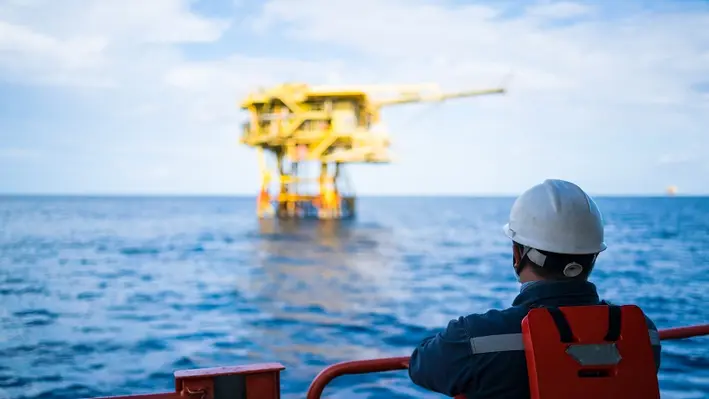

Following new developments to the Decommissioning and Abandonment Australia 2023 programme, Offshore Network has released a revised agenda.
More than 250 decommissioning experts are expected to attend this year’s D&A AUS conference, being held at the Duxton Hotel, Perth, from 30-31 May. As the country’s largest decommissioning summit, attendees will receive unique access to updated regulatory guidelines, innovative technologies and valuable lessons which contribute to the success of upcoming campaigns.
With the forthcoming decommissioning wave more visible than ever, D&A AUS 2023, like its predecessors, will serve as a meeting point for the industry to get ahead of the challenge and unlock the opportunities held within. Now, there is more incentive to join the community in Perth this year, with new presentations and tech displays added to the agenda.
Notably, Craig Baxter, Decommissioning Technical Manager from Claxton Engineering will present on innovation and collaboration in underwater laser cutting, allowing attendees to access insights into the tools capabilities and understanding of where the technology can be utilised best.
Visitors will now also be looking forward to a presentation from Richard Bazen, Sales Director of Energy from RemSense. At the conference, Bazen will look at mitigating the risk of HSE and decommissioning liabilities using photogrammetry based digital twins. With the digital age firmly upon us all, this is one session not to be missed.
Offshore Network has now announced additional facets with AF Offshore Decom presenting and Trident Australia exhibiting at the conference. Furthermore, the organiser has revealed group bookings from Woodside, Santos, Weatherford, Mann Group, Tetra Tech and more.
Find all relevant information and the agenda in the brochure here: https://offsnetevents.com/da-aus/
Or contact:
Erin Smith
Global Accounts & Australasia Regional Manager
Offshore Network Ltd.
t: +64 (0) 3 569 3074 | e:
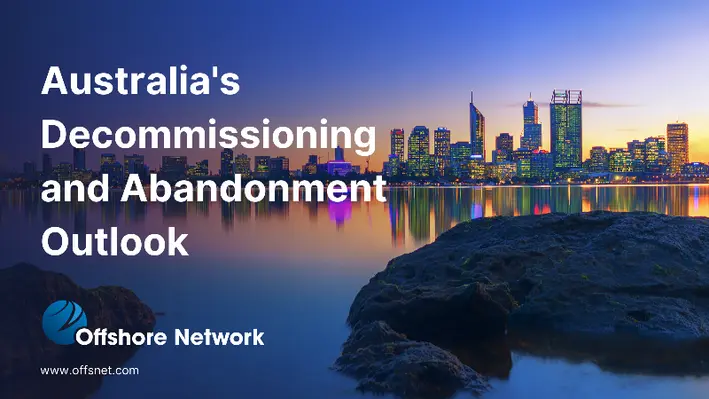
 Pressing climate concerns and an overall healthy oil price across 2022 have set the stage for Australia's decommissioning industry to flourish, according to a new report published by Offshore Network.
Pressing climate concerns and an overall healthy oil price across 2022 have set the stage for Australia's decommissioning industry to flourish, according to a new report published by Offshore Network.
Reports estimating that oil prices through 2027 will stay at a healthy rate of approximately US$90 per barrel bodes well for the decommissioning industry as companies can consider liability expenses even more open-handedly.
The government-backed Northern Endeavour project has triggered a flurry of decommissioning prospects to swing into action; a trend that is expected to continue over the next few years. Because of this, promising engineering companies like Wood and Monadelphous are being shot into the limelight, as the government onboarded them for various roles on the Northern Endeavour decommissioning.
Companies like Santos, Woodside, BHP and Vermillion Energy have signed up for kick-starting end-of-life activities, with ExxonMobil leading the way. Chevron has ongoing decommissioning projects onshore and offshore at Thevenard Island, which was rendered inactive in 2014. NOPSEMA has granted decommissioning approval to companies like Woodside, BHP and Cooper Energy early last year. Decommissioning activities in the Enfield Oil Field are being conducted by Woodside in phases, and is expected to be completed by 2024. Australia is financing research initiatives and organisations are tying up to tackle the challenges of decommissioning through knowledge sharing. Xodus, along with ANSTO, SA Radiation, Total Hazardous Integrated Solutions and Qa3, form the Contaminant Advisory Group that helps operators to work through the government’s OPGGS bill.
This flurry of activity has been prompted by a government determined to ensure that decommissioning responsibilities are carried out. The new Offshore Petroleum and Greenhouse Gas Storage Amendment (Titles Amendment and other Measures) Act 2021, makes sure the entities intending to carry out petroleum or greenhouse gas activities are capable, competent and responsible in proper discharge of obligations under the act.
The Centre of Decommissioning Australia (CODA) has estimated the decommissioning expenses of the Australian oil and gas industry to reach as high as US$40.5bn, considering the nation's significant asset stock. According to a report by Rystad Energy, 890 offshore wells in total were drilled in Australia before 2015, of which 108 have been permanently abandoned. Around 440 wells are P&A candidates, the majority of which are in the Gippsland Basin.
Based on the identified numbers, CODA has come up with a comprehensive liability report, to serve as the go-to manual for operators when it comes to making smart economical choices. Critical to this, as stressed by Francis Norman, CEO and Managing Director of CODA, is the importance of collaborative campaigning and in-situ decommissioning as effective cost-cutting measures.
Players like CODA are guiding the Australian decommissioning industry through the climate conundrum through strikingly innovative approaches. One of them is the rig-to-reef concept, which involves a special combination of materials that resulted in the Exmouth Integrated Artificial Reef, better known as the 'King Reef' in the Exmouth community. It combined 49 purpose-built concrete modules with six steel structures from a BHP-operated field that is no longer in use, providing home to 27,000 cu/m of new marine habitat. As incredible as that sounds, operators must have clarity about the risks involved as well, so that they can keep pushing barriers through innovation.
With every stakeholder working in tandem and taking onboard lessons from other more developed regions, the Australian industry can ensure that the forthcoming decommissioning wave can be weathered.

 Esso Australia, a subsidiary of Exxonmobil Australia, has entered into an agreement with Helix Energy Solutions to charter the Helix Q7000 semisubmersible vessel to support decommissioning activity across the Gippsland Basin.
Esso Australia, a subsidiary of Exxonmobil Australia, has entered into an agreement with Helix Energy Solutions to charter the Helix Q7000 semisubmersible vessel to support decommissioning activity across the Gippsland Basin.
The vessel will join Esso Australia’s growing fleet, with its roster of mobile offshore assets now including Rig 22, the HWT600 and a DOF Subsea Multi-Purpose Support Vessel.
Dylan Pugh, ExxonMobil Australia’s Chair, said, “The Helix Q7000 is a welcome addition to our extensive fleet of vessels and rigs currently operating across the Gippsland Basin. It is the forth mobile offshore asset we have added to our decommissioning fleet, and marks the first time we will be using a light well intervention vessel for subsea work locally.
“We are committed to sourcing the right assets for the work we are completing, given the variety of fields we have operated for over 50 years. Our priority is to remain safe, whilst using fit for purpose solutions which ensure we are meeting our decommissioning requirements.”
The Helix Q7000 is set to support decommissioning activities in Bass Strait from the end of 2023.
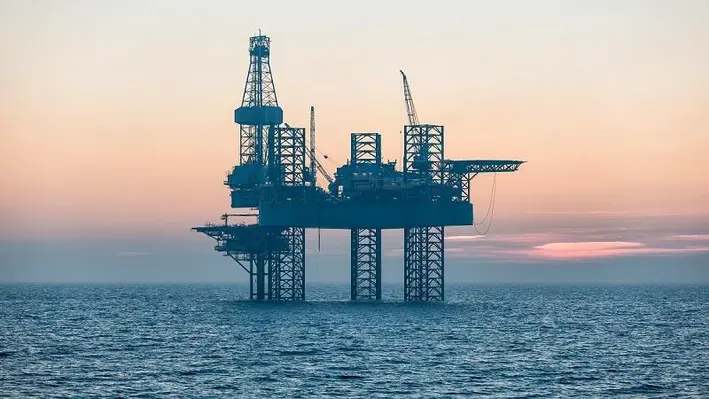
 The decommissioning of the Northern Endeavour facility has reached a significant milestone as contractor Petrofac Facilities Management Limited (Petrofac) has begun Phase One of the decommissioning process.
The decommissioning of the Northern Endeavour facility has reached a significant milestone as contractor Petrofac Facilities Management Limited (Petrofac) has begun Phase One of the decommissioning process.
The process will see the Northern Endeavour disconnected from subsea equipment and the suspension of the oil wells.
The facility is moored in the Commonwealth waters in the Timor Sea, between the Laminaria and Corallina oil fields. It stopped oil production in 2019, after being shut down by National Offshore Petroleum Safety and Environmental Management Authority (NOPSEMA) for immediate breeches in health and safety.
“The Australian Government remains committed to the successful decommissioning of the Northern Endeavour, the removal of infrastructure and the remediation of the Laminaria and Corallina oil fields,” said Madeleine King, Minister of Resources and Northern Australia.
“Petrofac taking operational control is a significant step in the decommissioning process.”
The US$355mn contract was drawn up with Petrofac in March 2022 to deliver the first phase of the decommissioning project.
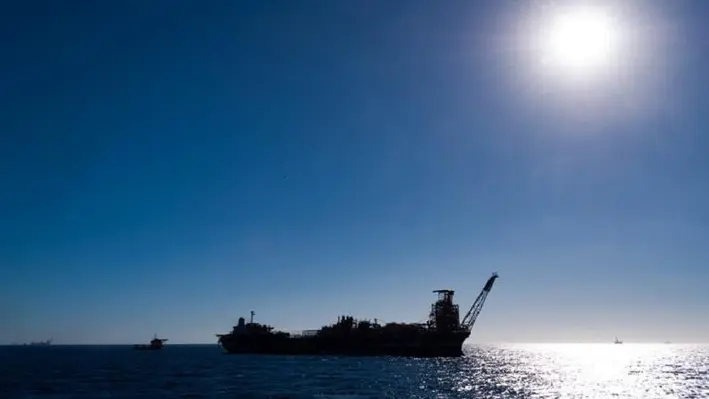

Engineering company Monadelphous Group Limited has secured a contract to provide operations, maintenance and industrial services to support Petrofac in the decommissioning of the Northern Endeavour Floating Production, Storage and Offtake (FPSO) facility.
The Northern Endeavour is a 274 m long FPSO, permanently moored between the Laminaria and Corallina oilfields, approximately 550 km northwest of Darwin in the Timor Sea. Production began in 1999 and peaked at 170,000 barrels of oil per day.
In 2019, the facility was shut down by NOPSEMA after an immediate threat to health and safety was found at the facility. After owners Northern Oil & Gas Australia went into liquidation, it fell to the Government to maintain and ultimately decommission it.
Petrofac was contracted earlier this year as outsourced operator responsible for decommissioning and disconnection of the FPSO. The scope includes the provision of its unique integrated services, working with both local and global suppliers.
The support to Petrofac represents Monadelphous’ first offshore decommissioning contract with work expected to be completed in the second half of 2023.
It represents a host of new contracts and contract extensions awarded to Monadelphous totalling approximately US$160mn.
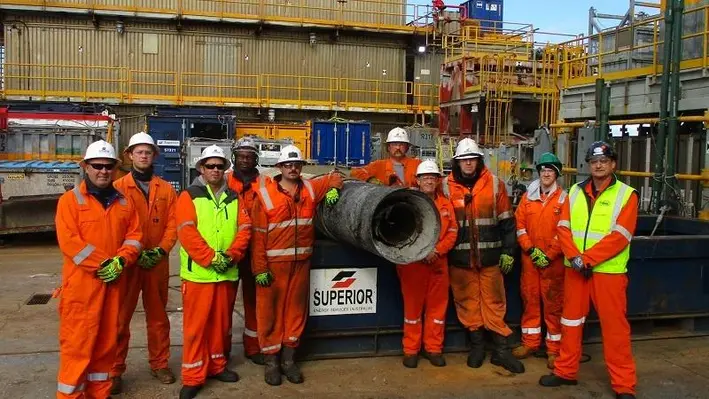

As part of the early decommissioning works in Bass Strait, Esso Australia’s wells team is moving to the next stage of plug and abandonment work, applying key learnings from the recently completed conductor removal operations on Kingfish B and Mackerel.
Following its successful work at Kingfish B, Rig 22 will now be utilised for plug and abandonment activities at the non-producing platform, Flounder.
“The professional crew deployed with Rig 22 safely and efficiently completed operations at Kingfish B. The results proved the combination of our capable workforce and the refurbished Rig 22 can deliver world class performance for plug and abandonments,” said Wells Operations Superintendent, Ryan Turton.
“We now have a long programme ahead, and we are excited to further optimise our processes and continue to responsibly meet our plug and abandonment obligations.”
The team is also preparing for the arrival of the DOF Multi-Purpose Support Vessel (MPSV) Skandi Darwin, which is arriving at the Barry Beach Marine Terminal early August.
“One of the MPSV’s first tasks will be to support works at our steel gravity based monotowers, Dolphin and Perch,” said Matt Barney, Marine Field Superintendent.
The MPSV provides a floating support asset that will allow the complete abandonment operations on our non-producing facilities which do not have accommodation based on them.
“The MPSV hosts the workforce and means we don’t have to fly workers in and out of the area each day,” said Matt.
“We’re excited to start utilising the MPSV to expand our capabilities and adopt new technology to identify efficiencies, while ensuring the work can be completed safely.”
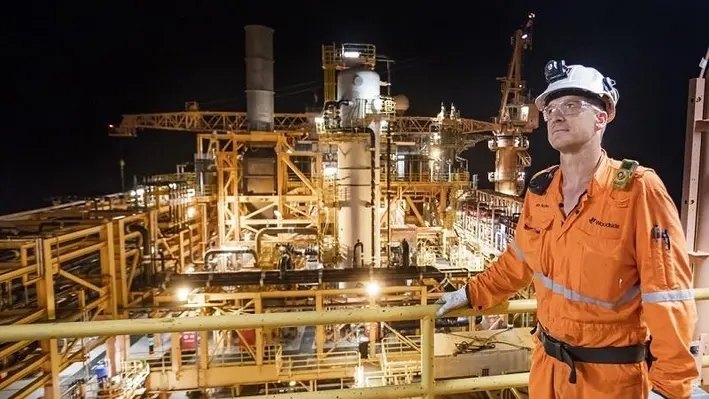

Heerema has been awarded a decommissioning contract by Woodside Energy that includes the integrated engineering, preparation, removal, and transport of the Nganhurra riser turret mooring (RTM).
For the project, Heerema will remove the RTM from the Enfield field, located approximately 52 km northwest of Exmouth in Western Australia, by lifting the structure in one piece onto a barge and transporting it o Henderson or another suitable Australian port for dismantling, and recycling or reuse.
Jeroen van Oosten, Heerema’s Chief Commercial Officer, commented, “We are proud to be Woodside Energy’s contractor of choice for removing the Nganhurra RTM. This contract represents our first decommissioning project in Australia and although Heerema has a long history of safely and sustainably removing offshore structures from the North Sea and Gulf of Mexico, we are very excited to continue our responsible decommissioning operations in Australian waters.”
Heerema is looking forward to taking an active role in Australia’s decommissioning ambitions. The removal and subsequent reuse or recycling of offshore infrastructure is an essential final step in the lifecycle of oil and gas infrastructure and aligns with our company values of responsibility, sustainability, and contributing to a circular society.”
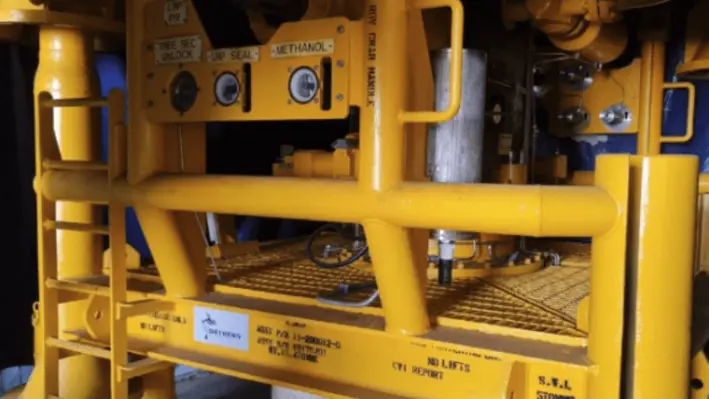

At D&A AUS 2022, Craig Costello from ASX Listed (T3K) TEK-Ocean Energy Services, provided an in-depth exploration of the company’s work within the abandonment space, explaining how it has inspected, refurbished, revalidated and recertified vintage well intervention equipment and assisted in decommissioning vintage oil and gas wells.
Speaking about wells and well intervention equipment, he presented cases of petroleum production companies with vintage subsea wells. He added that some of those wells were past their design lives and have integrity issues – both known and unknown problems. “The construction and production of these wells provided jobs for many decades. But it’s now time for these legacy wells to be plugged and abandoned, safely and efficiently,” he added.
In many cases, the required intervention equipment isn't readily available via OEMs – often because it has been retired. So this legacy vintage equipment, when it is available, requires revalidation, recertification, refurbishment and adaptation to the specifics of the project, Craig explained. Much of the legacy equipment is said to be redundant tooling.
There's an expectation from those who have worked on these wells for many years and from the broader community that the wells are abandoned safely and in a timely manner. “Increasingly, we're seeing NOPSEMA publishing directions and notices in regard to the decommissioning of wells, setting deadlines, and publishing information papers on decommissioning.”
Moving on, he presented three case studies to the audience, the first being the abandonment of some subsea wells by a semi-sub rig – Esso’s Blackback abandonment in the Gippsland basin; second was another subsea well set from a jackup rig: Esso’s Seahorse & Tarhwine abandonments; and lastly the Intervention Riser System assessment on Laminaria Corallina.
He informed that there were a lot of common themes for the three projects, one of them being that these are vintage subsea wells, with both known or otherwise unknown issues due to the lack of communication with the wells.
In all these cases, TEK-Ocean was able to provide alternative means to monitor the wells and barriers in both open water and drilling riser configurations.
Other common threads on these projects were:
• Intervening on wells past the original nominal design lives
• The vintage legacy equipment requiring revalidation, recertification and refurbishment
• Integrity issues on the wells
• Planning, innovative solution ideation and engineering.
Focusing on the first case study – the Blackback well abandonments – Craig said there were 20-year-old wells that had been shut for almost 10 years without any communications. “They have been lost from the Mackerel platform. So they didn't know the status of those wells. TEK-Ocean was selected as the lead subsea provider for that project for a turnkey solution to abandon the wells, requiring innovative approaches to get communications back to these vintage subsea control modules,” Craig added.
Hence, the scope of supply that TEK-Ocean provided for the solutions included sourcing equipment, conducting risk assessments and implementing a barrier philosophy for operational phases. The customer had supplied the vintage tree running tool and TEK Ocean recertified that.
“Re-establishing communications on these wells was a project in itself. Several pre-rig campaigns were executed to survey the assets, confirm the subsea interfaces functionality and to reduce the cost of the programme. This included ROV inspections, testing, opening and closing valves, cleaning, and debris removal."
Craig said establishing communications on those wells did take some effort as several of them that had not been attended to in a very long time and the equipment wasn’t readily available. “So TEK-Ocean was tasked with carefully assembling together a working system from three partial and broken systems that were available, with limited support and documentation from the OEM. This was successfully achieved.”
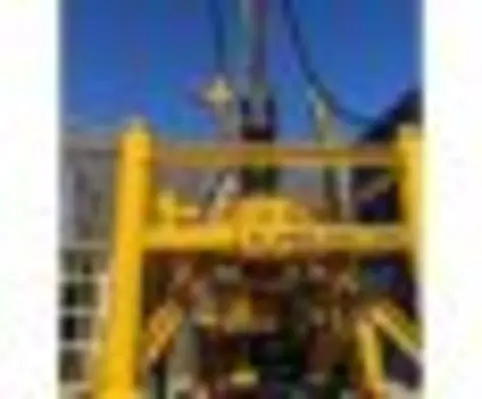
Craig informed that the Blackback wells were first attempted to be killed in 2010 via a bullhead operation from the Mackerel platform that was successful in two of the wells but it was later found that one had some internal leaks. “TEK-Ocean was not involved in the original bullhead operations but in the light of diagnostics, it was found that there was pressure on the wellhead above the master valves. Also, in 2015, communications were lost, so those investigations were a part of the 2019 campaign. The customer supplied a tree running tool, a 1980s vintage piece of equipment required for recertification and refurbishment. This recertification was achieved via crosschecking materials, part numbers, compatibility and suitability.”
One risk assessment flagged up that only one tree running tool had been provided. This was identified as a single point of failure and required de-risking because multiple runs of the tree running tool were going to be required. De-risking was achieved via a saver- sub approach that was designed, manufactured and project managed by Tek-Ocean for an integrated solution.
Moving to the second case study, he showed Seahorse & Tarhwine, which is in slightly shallower water in the Gippsland basin with 46 metres of water, and the abandonments were performed from a jack up rig. These vintage wells were drilled in the early 80s and then completed later that decade, but had been shut for five or six years, so they hadn’t been checked for quite some time. “The scope of supply in this case was a full subsea project management service again, using TEK-Ocean ISO accredited integrated management system, including all aspects of project management and engineering. The project execution plan was prepared including rig interfacing, barrier and emergency shutdown philosophies. Again, there was a TEK-Ocean managed pre-rig ROV campaign, including subsea cleaning, testing, to de-risk the rig campaign,” he added.
TEK-Ocean supplied and repaired all the equipment, again except for the tree running tool. In this project, the intervention riser system used was the TEK-Ocean dual bore riser system and this can operate down to 200 metres.
It was again a tight preparation and delivery schedule for this project. However, TEK-Ocean was able to mobilise in good time ahead of the required date set by the customer again with HSE performance and an operation during the peak COVID lockdown period in Victoria.
The third case study was the recent inspection and condition assessment of 1990s vintage Laminaria Corallina IRS. The inspection and condition assessment were carried out for both the upcoming suspension of the wells and for the future abandonment.
While concluding, Craig said that TEK-Ocean has a deep and broad knowledge of installed infrastructure throughout Australia particularly in the Carnarvon & Gippsland basins and that the company can support across all different project types. “These case studies demonstrate the recent projects that have been done in the last couple of years for major operators in the Gippsland Basin. We can help you achieve your cost and schedule goals on subsea well abandonments, and help you maintain a strong HSE performance record. TEK-Ocean is now recognised as a leading Australian company in the decommissioning space.”
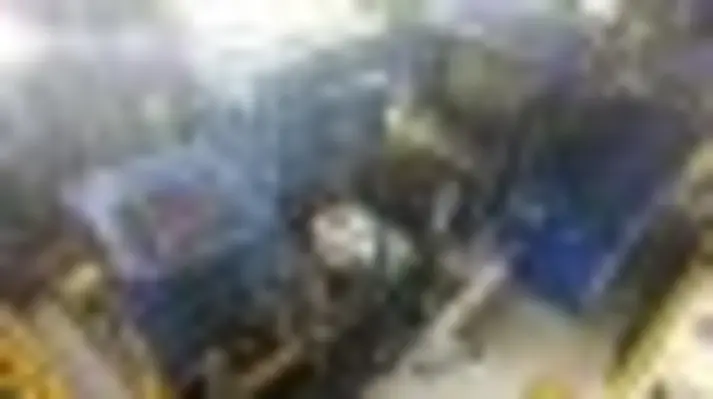
Page 2 of 4